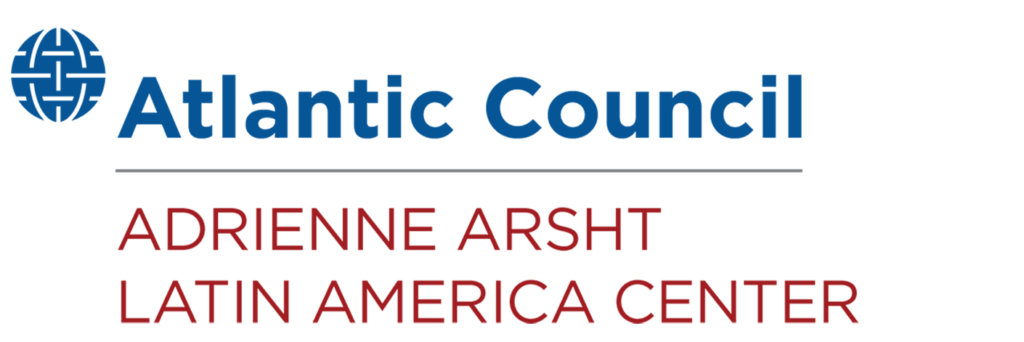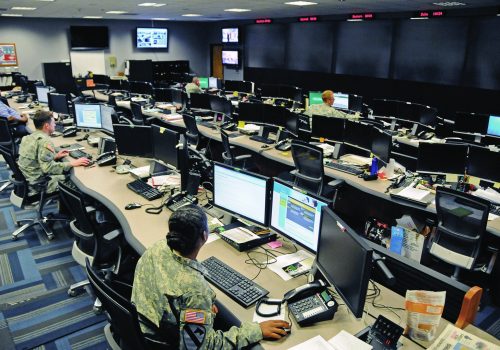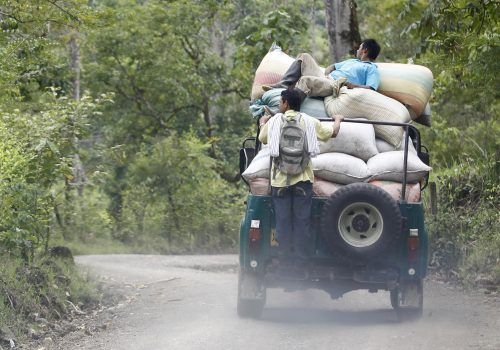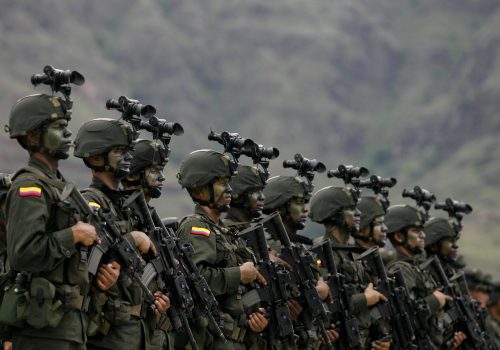Prioritize comprehensive security assistance
IN NOVEMBER 2016, Colombia ratified historic peace accords, formalizing an end to Colombia’s decades-long conflict with the Revolutionary Armed Forces of Colombia (FARC). I remember that day well; it was a momentous occasion for all of Colombia, particularly for then-President Juan Manuel Santos, who had tirelessly overseen negotiations with the FARC since 2012. I knew how much he had invested in the process. While visiting Colombia as Director of the Central Intelligence Agency (CIA), I was the first US official he told that he would pursue a peace agreement. I was encouraged for him and the entire country as I realized what a critical turning point it could be for Colombia’s future and our bilateral relations.
Colombia has long been a highly valued partner of the United States. Our two countries’ bilateral relationship has been characterized by cooperation across various sectors over many decades. It is undoubtedly the United States’ most important security partnership in South America, with the two countries working together tirelessly to address threats to hemispheric security. Since 2000, the United States has provided $12 billion to Colombia, helping to strengthen its military and police forces and to provide assistance for numerous economic development initiatives.1June S. Beittel, Colombia: Background and U.S. Relations, Congressional Research Service, updated December 16, 2021, https://sgp.fas.org/crs/row/R43813.pdf. Our long-standing and successful military, police, and intelligence partnerships have been validated most recently by Colombia’s nomination as a Major non-NATO Ally.
In President Joseph R. Biden’s March 2022 meeting with President Iván Duque, President Biden commemorated the bicentennial of the US-Colombia partnership, highlighting the “uniquely close” relationship between our countries and committing to a “comprehensive approach to … consolidate and sustain peace implementation and reconciliation programs.2”Statement by Joseph R. Biden of the United States and President Iván Duque Márquez of the Republic of Colombia, US-Colombia Bicentennial Partnership, White House, March 10, 2022, https://www.whitehouse.gov/briefing-room/statements-releases/2022/03/10/joint-statement-by-president-joseph-r-biden-jr-of-the-united-states-and-president-ivan-duque-marquez- of-the-republic-of-colombia-u-s-colombia-bicentennial-partnership/. While this is a welcome affirmation of the administration’s intent to sustain the bilateral relationship, it is imperative we find additional ways to galvanize it with funding and initiatives because the need for US solidarity with Colombia has never been greater.
A new reality
The 2016 Colombian peace agreement set out to undo many of the structural causes of Colombia’s decades-long conflict, an admirable, albeit lofty, task. While the agreement did result in the disarmament of some thirteen thousand FARC members, the road to peace and stability beyond that achievement has proven to be quite rocky.3Luis Jaime Acosta and Helen Murphy, “Exclusive: Thousands of Colombian FARC rebels return to arms despite peace accord – military intelligence report,” Reuters, June 5, 2019, https://www.reuters.com/article/us-colombia-rebels-exclusive/exclusive-thousands-of-colombian-farc-rebels-return-to-arms-despite-peace-accord-military-intelligence-report-idUSKCN1T62LO. At the five-year mark of implementation—one-third of the total timespan designated in the accords—Colombia still had a long way to go. That was not unexpected. Finding peace and security after decades of conflict is a tall order, and, in retrospect, the signing of the peace agreement may prove to have been easier than achieving lasting peace.
The challenges of implementing the agreement have been amplified by the fact that around 6.9 million Colombians—the world’s third-largest population of internally displaced people—remain displaced.4“Global Internal Displacement Database,” Internal Displacement Monitoring Centre, accessed March 1, 2022, https://www.internal-displacement.org/database/displacement-data. Many violent armed groups—guerrillas, paramilitaries, and drug traffickers—bear responsibility for the displacement crisis: some groups explicitly targeted civilians in a quest for territorial control.5Charles Bergquist, Ricardo Peñaranda, and Gonzalo Sánchez G., eds., Violence in Colombia 1990- 2000: Waging War and Negotiating Peace (Wilmington, Delaware: Scholarly Resources, 2001).
Violent conflict among the various groups forced civilians to flee. The common denominator was the absence of the state in rural areas, which made displacement worse. The vacuum allowed the FARC, for example, to set up de facto governance structures, dislodging state control from certain areas for decades.6Ana Arjona, Rebelocracy: Social Order in the Colombian Civil War (New York: Cambridge University Press, 2016). When the FARC was at its peak in the late 1990s, it controlled as much as one-quarter of Colombian territory.7Nick Miroff, “The staggering toll of Colombia’s war with FARC rebels, explained in numbers,” Washington Post, August 24, 2016, https://www.washingtonpost.com/news/worldviews/wp/2016/08/24/the-staggering-toll-of-colombias-war-with-farc-rebels-explained-in- numbers/. While the Colombian government now has greater access to these areas, it still struggles to make inroads with historically under-resourced populations.8“En municipios Pdet ya se han invertido más de $10 billones: Gobierno,” El Colombiano, November 9, 2021, https://www.elcolombiano.com/colombia/paz-y-derechos-humanos/consejero-emilio- archila-visita-medellin-y-habla-de-municipios-pedet-PE15998878.
The optimistic visions of the peace dividend have been undermined by the pernicious and persistent problem of coca crop cultivation. During my time as CIA director in 2012, coca cultivation was approximately 78,000 hectares (ha). In 2020, coca crops reached 245,000 ha, with 1,228 tons of cocaine produced.9Government of the United States, “Office of National Drug Control Policy Releases Data on Coca Cultivation and Potential Cocaine Production in the Andean Region,” White House, July 16, 2021, https://www.whitehouse.gov/ondcp/briefing-room/2021/07/16/ondcp-releases-data-on-coca-cultivation-and-potential-cocaine-production-in-the-andean-region/. 10United Nations Office on Drugs and Crime, “Summary Fact Sheet – Colombia Coca Cultivation Survey, 2020,” UNODC, accessed March 1, 2022, http://www.unodc.org/documents/crop-monitoring/Colombia/Colombia_2020_Coca_Survey_FactSheet_ExSum.pdf. New initiatives for partnership in reducing coca cultivation are essential for both the United States and Colombia. Otherwise, remaining guerilla and criminal groups will capitalize on the smuggling of staggering quantities of cocaine out of Colombia, a substantial amount of which finds its way to US soil.
In addition to the challenges of illegal narcotics, Colombia is also grappling with political and economic crises in neighboring Venezuela, resulting in an enormous outflow of refugees. Colombia has been generous in its acceptance of nearly two million Venezuelan refugees. It deserves considerable admiration for what it has done,11“R4V Latin America and the Caribbean, Venezuelan Refugees and Migrants in the Region – April 2022,” Regional Interagency Coordination Platform for Refugees and Migrants of Venezuela, April 12, 2022, https://www.r4v.info/en/document/r4v-latin-america-and-caribbean-venezuelan-refugees-and-migrants-region-april-2022. with its welcoming policies an example for the rest of the world, especially as Europe copes with the enormous migration of Ukrainians fleeing the war that has resulted from Russia’s unprovoked invasion. The influx of Venezuelan migrants has further challenged the government, both in its allocation of government resources and economic consequences, with no end in sight. A study by Colombia’s Central Bank predicts that between three and five million Venezuelans will settle in Colombia by the end of 2022, which will further strain Colombia’s limited federal resources.12Vanessa Buschschlüter, “We gave Venezuelan migrants a licence to dream,” BBC News, May 17, 2021, https://www.bbc.com/news/world-latin-america-57070813#:~:text=Colombia’s%20Central%20 Bank%20predicts%20that,could%20have%20settled%20in%20Colombia.
Securing further international financial assistance to support Venezuelan migrants is vital, particularly given the enormous gap in global funding for the Venezuela crisis compared to past migration situations. Host countries like Colombia have, for example, received only $256 per capita in international assistance for each Venezuelan refugee—less than one-tenth of the $3,150 received by host countries for each Syrian refugee.13Dany Bahar and Meagan Dooley, “Venezuelan refugees and their receiving communities need funding, not sympathy,” Brookings, February 26, 2021, https://www.brookings.edu/blog/up-front/2021/02/26/venezuelan-refugees-and-their-receiving-communities-need-funding- not-sympathy/.
The way forward
The United States must build on its decades of partnership with Colombia and use the present moment to lay out a new comprehensive approach to its assistance, updated for present-day challenges and addressing the obstacles to peace. To do so, the US government should look back on the rich shared history of our two countries, evaluate successes and shortcomings, and build on the positive developments enabled by Plan
Colombia to establish solutions for a more prosperous future.
Historically, the United States has been the leading provider of aid to Colombia, with most funds—averaging 65 percent annually—going toward military assistance.14“Colombia Aid,” Google spreadsheet, accessed March 1, 2022, https://docs.google.com/spreadsheets/d/1P8IEn5b4XlUOD0xYatu3SH1L6jgNPuY0QDggAiDWqF0/edit#gid=1299308071. President Barack Obama’s “Peace Colombia” initiative, however, increased the amount allocated to develop other sectors of Colombia, an approach that Congress has continued to support in ongoing appropriation negotiations.15June S. Beittel, Colombia: Background and U.S. Relations, Congressional Research Service. While it is essential for the United States to diversify its investments, it should not be done at the expense of consistent and cost-effective security aid. After all, without security, other progress is not possible.
The United States should recommit itself to professionalizing the Colombian military and police in the post-peace accord era, specifically focusing efforts on achieving institutional control in remote, disenfranchised territories. Before signing the peace agreement, I participated in a Ministry of Defense conference in Bogotá, where I heard an overarching assumption that the peace dividend would reduce the requirement for security force operations. As I cautioned then, Colombia needed to understand that there likely would be no peace dividend; rather, Colombia would actually need more, not less, military and police forces, as they would have to take control of additional rural territories. That would require additional security capabilities and a comprehensive approach that included economic alternatives to coca cultivation, new infrastructure development, expanded educational services, and the provision of other basic services necessary for long-term stability. Events since the conclusion of the peace agreement have validated that assessment.
The United States should also continue making its funding contingent on increased training on human rights and the rule of law, underscoring our commitment to democratic development and economic growth.16Congress of the United States, “S.1605—National Defense Authorization Act for Fiscal Year 2022,” Congress.gov, accessed March 1, 2022, https://www.congress.gov/bill/117th-congress/senate-bill/1605/text. And clearly, a realistic assessment of drug trafficking activities and guerrilla assets must be undertaken to develop a coherent plan for addressing them.
To facilitate all of this, we should continue to help Colombia rebuild its intelligence agency—previously dismantled due to corruption and involvement in political activities—to better monitor Colombia’s ever-evolving security situation and continue to share information with trusted allies, including the United States.17Juan Forero, “Amid Scandal, Colombia Dismantles Spy Agency,” National Public Radio, January 20, 2012, https://www.npr.org/2012/01/20/145529485/amid-scandal-colombia-dismantles-spy- agency. More robust law enforcement and criminal investigation capabilities in Colombia, akin to those of the US Federal Bureau of Investigation, alongside two-way intelligence sharing and enhanced training in surveillance and reconnaissance strategies, would likely open the door to other areas of cooperation. The reestablishment of the Colombian intelligence community—done correctly and transparently—could serve as an example of how Colombia acknowledges its past missteps, learns from them, and strengthens its commitment to democratic values, thereby building further confidence in its governing capacity.
This military support will only succeed if coupled with sustainable, long-term investment in other sectors, notably infrastructure and trade. Colombia has tried multiple initiatives to build up its rural areas and expand governmental reach. Clearly, the understanding for this need is there, but so too must be the long-term commitment and funding. The United States has a unique ability to assist Colombia and fund projects that can support Colombian farmers in their bid to find economic outlets beyond coca cultivation while also providing education in rural communities, helping ex-combatants find jobs, encouraging foreign investment—particularly in infrastructure projects—and seeking to build dialogue among a citizenry that has been divided for far too long.
For the United States to demonstrate commitment to its pledge of support for Colombia, it should accept that results cannot and will not come overnight. Rebuilding a conflict-affected country will require patience, resources, and unwavering commitment. There is no country better positioned to stand by Colombia than the United States, just as there is no country in South America whose partnership is more valuable to the United States. As President Biden recently observed, “Colombia’s security is in the national security interest of the United States.18”Statement by Joseph R. Biden of the United States and President Iván Duque Márquez of the Republic of Colombia, US-Colombia Bicentennial Partnership, White House, March 10, 2022. It is once again time for the United States to translate that reality into coherent, comprehensive, and committed action.
* * *
Gen. David H. Petraeus (US Army, Ret.) is a partner with the global investment firm KKR and chairman of the KKR Global Institute, which he established in May 2013. He is also a member of the board of directors of Opti, FirstStream, and the Atlantic Council. Prior to joining KKR, Petraeus served more than thirty-seven years in the US military and was director of the Central Intelligence Agency.
Related Allies essays
A roadmap for a new type of engagement
This moment opens the door for a reimagined US partnership with Colombia based on a shared vision for a more prosperous, inclusive, and sustainable future.
Related program

The Adrienne Arsht Latin America Center broadens understanding of regional transformations and delivers constructive, results-oriented solutions to inform how the public and private sectors can advance hemispheric prosperity.
Image: A soldier wearing a bomb protection suit looks on during a start of a special operative as a measure to increase security and combat criminal groups at the border between Colombia and Venezuela, at a militar base in Arauca, Colombia February 12, 2022. Picture taken February 12, 2022. REUTERS/Nathalia Angarita



